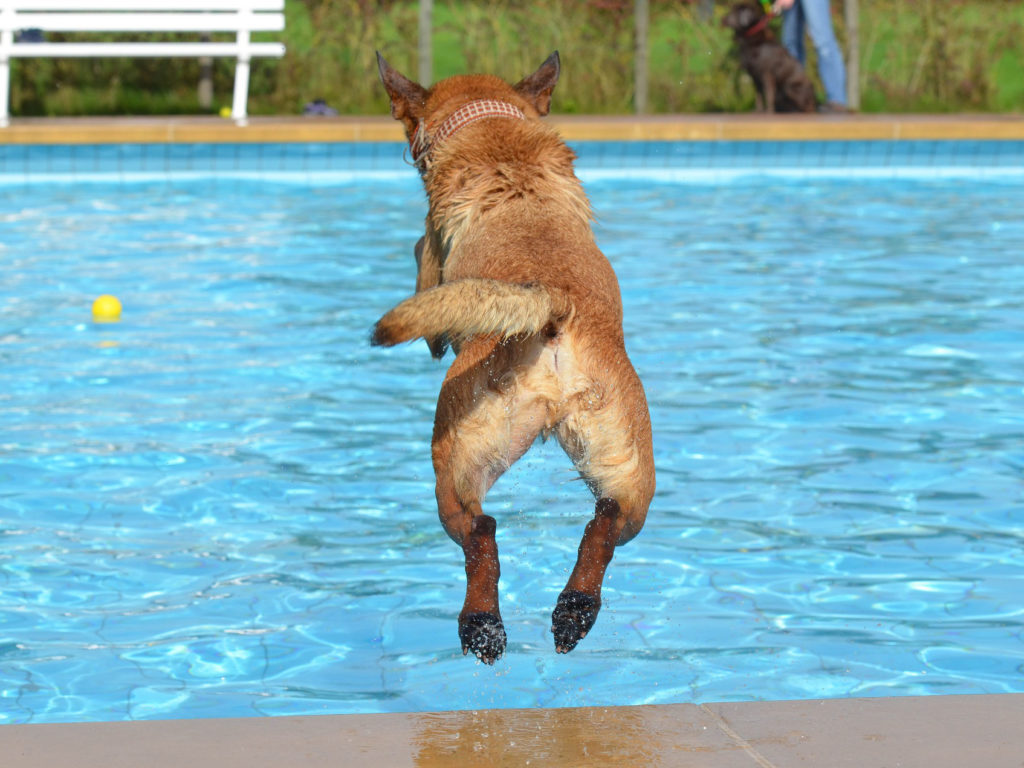Beat The Heat: How To Keep Pets Safe From Heatstroke
Summer is a time for barbeques, picnics, and other outdoor fun with family, friends, and pets. But with summer comes high temperatures, making it more important for owners to know how to recognize the symptoms of heatstroke and heat exhaustion in pets.

Heat exhaustion is a general term for the lethargy, discomfort, and weakness caused by high heat, while heatstroke is an actual illness caused by increased body temperature.
Dr. Dalton Hindmarsh, an emergency and critical care resident at the Texas A&M College of Veterinary Medicine & Biomedical Sciences, says that while some pets are more susceptible to heatstroke, any pet can develop the illness under certain conditions.
“Heatstroke is most commonly caused when pets are left outdoors during the hot, humid summer without adequate access to shade and water or when pets are left in vehicles without ventilation at any time of the year,” Hindmarsh said. “Heatstroke can also develop any time of the year in pets with respiratory conditions or obese pets, especially when the weather changes abruptly and becomes more humid.”
Animals with prolonged seizure activity or full body tremors may also develop heatstroke because of the increased body temperature caused by muscular activity.
Heatstroke is extremely dangerous because it has the potential to harm the body in multiple ways and causes increasing damage as an animal’s body temperature rises.
“Body temperatures above 105 degrees Fahrenheit can result in life-threatening blood clotting problems, shock, severe dehydration, kidney and liver damage, and neurologic changes,” Hindmarsh said. “Literally every cell in the body is affected as the extreme temperature damages proteins.”
If the body temperature rises above 107 degrees Fahrenheit, the animal may also experience multi-organ dysfunction and even death.
For this reason, it is very important for pet owners to be aware of and watch for the signs of heatstroke whenever a pet is outside for an extended period of time. These signs include collapse; a sudden onset of vomiting and/or diarrhea; respiratory distress and nonstop panting; drooling; and bright red, purple, or blue gums.
If you notice that a pet has any of these signs, Hindmarsh suggests taking immediate action.
“Remove the pet from the environment, start the cooling process with a fan, and seek veterinary care as soon as possible,” he said. “I would caution owners against placing them in an ice bath or submerging them in water because it may drop their temperature too low.”
In addition to carefully monitoring pets, there are other steps owners can take to prevent heat exhaustion and heatstroke. Hindmarsh recommends making sure pets always have access to fresh water and shade when outdoors, avoiding exercise during the hottest and most humid times of the day, and never leaving a pet unattended in a vehicle.
“Owners should consult their family veterinarian and always start slow when reintroducing activity to a previously inactive pet, especially in the spring,” he said.
Your veterinarian can also provide further advice on keeping your pet safe from heatstroke and heat exhaustion.
Summer heat has the potential to be dangerous, but by carefully monitoring an animal’s condition and the environment, owners can enjoy this time of year with their beloved pets.
Pet Talk is a service of the College of Veterinary Medicine & Biomedical Sciences, Texas A&M University. Stories can be viewed on the web at vetmed.tamu.edu/news/pet-talk. Suggestions for future topics may be directed to editor@cvm.tamu.edu.


